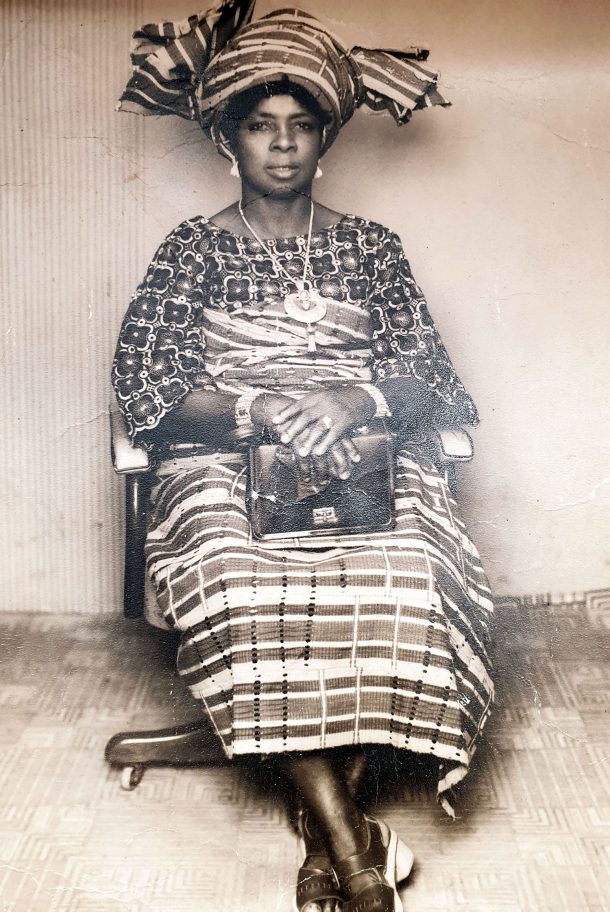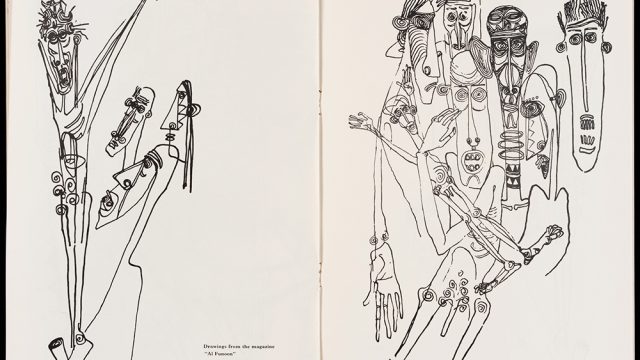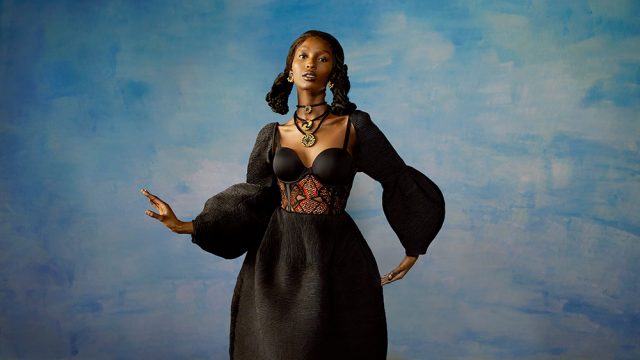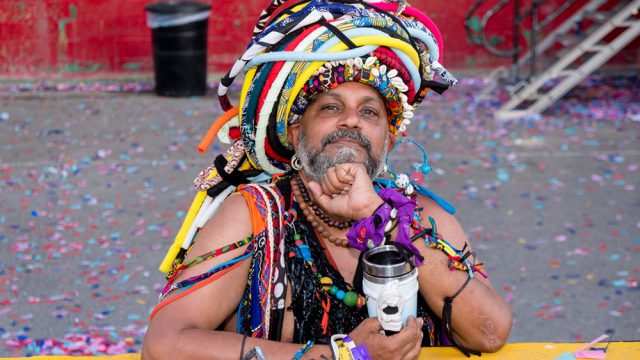Earlier in the year we announced our plans to stage Africa Fashion. Opening June 2022, the exhibition will celebrate the irresistible vitality, innovation and dynamism of the contemporary African fashion scene. The announcement was accompanied by a call out encouraging people to get in touch with objects and stories related to the exhibition theme. Foregrounding individual African voices and perspectives is the guiding principle for the show, and the call out is one way we will give a platform to these multiple voices and experiences.
One of the types of clothing we were hoping to hear about was Aso-Ebi, a uniform dress typically worn in Nigeria. I work as a shop assistant at the V&A, and I’m also a fashion designer, coming from a Nigerian background and growing up in a traditional household, I know how important Aso-Ebi is. The call out was a great prompt for me to reflect on these traditional garments.
Aso means cloth and Ebi means family in Yoruba, a language spoken in West Africa, most predominantly in southwest Nigeria. So technically Aso-Ebi means ‘family cloth’. A type of uniform dress, Aso-Ebi serves as a piece of identity, displaying unity among a group – such as friends of the family at a celebration or event. It shows ‘who’s who’, especially in a traditional wedding or funeral, with the similar cloth identifying who the immediate family are, and who has gathered with them to show support.
Aso-Ebi is the haute couture of traditional uniform dress. Made-to-order, it’s detailed, full of colour, and made with a complex combination of detailed hand techniques. The ensembles themselves come in playful and beautiful intricate layers. For women these are the Iro, which is the bottom wrap skirt, normally known as ‘the wrapper’. The gèlè, a head wrap, which can be tied in elaborate styles depending on the material used. The Buba, a blouse or top garment, and the Ipele, a shawl that is normally draped down the shoulder, complete the look.

For the men, the Fila, a cap, is worn either draped to one side or standing up on the head. Sokoto is the trouser garment, worn with a Buba tunic top, and the Agbada, a free-flowing gown, worn as a top piece that ends between the knee and ankle. Kembe, which are ¾-length trousers, and Dansiki, an oversized embroidered top might also be worn.
The made-to-order process is at the core of Aso-Ebi. The piece goes through numerous stages and is a collaboration of the work of many people, from designer, to weaver, to seamstress/tailor, to embroidery designer, to embroiderer, before being finalised. It’s couture, but from the perspective of another culture. The design and making process of applied embroidery, for example, is very similar to French embroidery houses, like Lesage, examples of which are also in the V&A’s collection.
Aso-Ebi can be made from many different fabrics, but it is often made from Aso-Oke. Aso-Oke is a hand-woven cloth created by the Yoruba people. Aso-Oke is short for Aso llu Oke, which means clothes from the countryside. Aso-Oke has been woven by the Yoruba for centuries, predominantly in southwest Nigeria, including Iseyin, it’s also produced in towns such as Kwara, Kogi, Ondo (my mum’s state), Oyo, Ogun, Ekiti, Lagos and Osun state.
Aso-Oke cloth comes in multiple variations, such as Sayan, Alarri and Etu. Sayan, ‘the king of aso oke’ is woven locally from beige wild silk that comes from the cocoons of the Anaphe moth and cotton yarns. Sayan is not dyed, so that the natural light brown/beige colour is retained.
Alarri, another popular cloth, is woven with magenta waste silk, synthetic silk or locally grown cotton and sometimes adorned with shiny threads to catch the eye. On rare occasions you may also see this with perforated patterns. Etu is a deep blue, indigo dyed cloth, often with very tiny light blue stripes. It is said to resemble the plumage of bird. Etu is noted for its simplicity – and is often worn with Aran, a white velvet fabric with concentric designs. The different types of Aso-Oke, and the distinct patterns and colours used, have special meaning, and are often associated with particular occasions. Etu, for example, was historically worn as a social dress by chiefs and elders, whereas Alarri could be worn for most Yoruba events.
The detail and intricacy of Aso-Ebi and Aso-Oke is immense. The clothes and the cloth present rich stories that reflect who we are, where we come from, and our rich history, past and present.



Great share, and a very interesting topic.
Celebrating other cultures and their fashion and history should become more and more popular especially in such a vibrant city filled with people from so many nationalities.
Congratulations to the author for giving us ‘ the reader’ such a wonderful detailed reading.
It is a rich history indeed! Beautifully written and educational. It’s important that we hear from these voices regularly. Thank you for sharing your history and a wonderful photo of your grandmother.
What an amazing piece! I feel as though I had a vivid history lesson where I could almost smell the yarn and touch the beautiful fabric. Thank you to the author for sharing this piece and informing us about the history behind the Nigerian traditional wear. It makes me fall back in love with London as a city because it allows the space for this type of writing to be birthed and provides insight into other cultures. Thank you, thank you, thank you to the author for such an educational tour. I love it!
As previously mentioned it’s a perfect moment to celebrate 🎉 the tradition and culture in its purest form. So happy to see people like Lulu herself as an independent artist bring creative. Wish her all the best and good luck in her future projects. This blog was very insightful and explanatory. Hope it goes far.
This was a banging read! Super informative and detailed, as a Yoruba man myself I learnt new things about what is a huge part of our culture. Great piece of writing and expression of knowledge for people of all cultures to learn from 🔥👌🏾.
I love this article. Beautifully written and so well researched. It’s lovely to learn new things about amazing cultures. Thank you for sharing!
How interesting, really looking forward to this exhibition opening.
This was such a great article!! Soo interesting!! I loved it!!
I have a question? Can Aso-ebi be also categorised as an art form ?